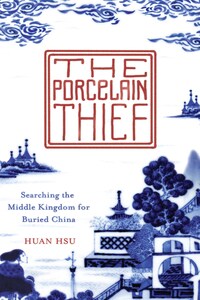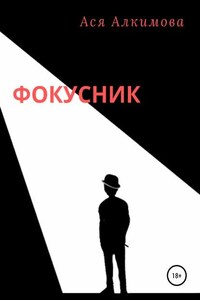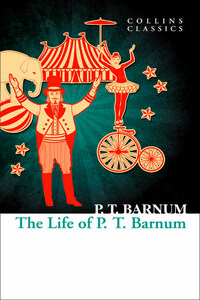Fourth Estate
An imprint of HarperCollins Publishers
1 London Bridge Street
London, SE1 9GF
www.4thestate.co.uk
First published in Great Britain by Fourth Estate in 2015
First published in the United States by Crown in 2015
Copyright © Huan Hsu 2015
Huan Hsu asserts the moral right to be identified as the author of this work.
Cover design by Sarah Greeno
Cover shows details from a Dish decorated with a lake scene with terraces, pavilions and pagodas, from Jingdezhen, China, Qing Dynasty, 1644-1911 © Victoria and Albert Museum, London; Details from a porcelain vase with underglaze blue decoration, 1662–1722, Chinese School, Qing Dynasty, 1644-1912 © Cleveland Museum of Art, OH, USA/Gift of Mrs E. S. Burke, Jr./Bridgeman Images; Details from a vase from Jingdezhen kilns, Jiangxi Province, China, 1662-1722 © V&A Images/Alamy; Details from a Jingdezhen Ware Beaker © Royal Ontario Museum/Corbis
A catalogue record for this book is available from the British Library.
All rights reserved under International and Pan-American Copyright Conventions. By payment of the required fees, you have been granted the non-exclusive, non-transferable right to access and read the text of this e-book on-screen. No part of this text may be reproduced, transmitted, down-loaded, decompiled, reverse engineered, or stored in or introduced into any information storage and retrieval system, in any form or by any means, whether electronic or mechanical, now known or hereinafter invented, without the express written permission of HarperCollins.
Source ISBN: 9780007479436
Ebook Edition © March 2015 ISBN: 9780007479429
Version: 2015-02-27
To my family,
the treasure I always had,
and to Jennifer,
the treasure I never expected to find
Contents
Cover
Title Page
Copyright
Dedication
Author’s Note
Family Tree
Map 1 China: My Journey
Map 2 Liu Feng Shu’s Journey
Map 3 Poyang Floodplain
PROLOGUE
1. THIS IS CHINA
2. A CHICKEN TALKING WITH A DUCK
3. LIU FENG SHU
4. PANDA CHINESE
5. THE ORPHAN
6. STREET FIGHT
7. JOURNEY TO THE WEST
8. THE REAL CHINA
9. END OF PARADISE
10. FROM FAR FORMOSA
11. CITY ON FIRE
12. FALLING LEAVES RETURN TO THEIR ROOTS
13. ALL DEATH IS A HOMECOMING
14. NANJING
15. NORTHERN EXPEDITION
16. A STUMBLE FROM WHICH THERE IS NO RECOVERING
17. THE NINE RIVERS
18. THE LONG VALLEY
19. XINGANG MARKS THE SPOT
20 CHASING THE MOON FROM THE BOTTOM OF THE SEA
Picture Section
A Note on Sources
Index
Acknowledgments
About the Author
About the Publisher
THIS BOOK RECOUNTS MY TIME IN CHINA FROM 2007 TO 2010, and then the summer and fall of 2011. Although this is a work of nonfiction, any attempt to reconstruct recent history is inherently subjective, and my guiding principle was to tell a coherent story about China, my family, and my search for my great-great-grandfather’s buried porcelain. Many of the people and places in this book were visited a number of times over many years. For the sake of narrative logic, I have in some instances compressed the time between these encounters, omitted extraneous details, or explained information out of time with its revelation to me. However, descriptions of people, places, or encounters themselves have not been altered, and the dialogue was recorded either as it happened or soon thereafter.
A word on translations: Many of my conversations with Chinese speakers took place in Mandarin Chinese. When translating the conversations, I tried to be faithful to my partner’s intended meaning and re-create it as I understood it in everyday English while also preserving the unique qualities of their speech. The instances where Chinese speakers use English are noted as such. I have used pinyin transliterations except for names commonly spelled otherwise, such as Chiang Kai-shek, Sun Yat-sen, and the members of my family who write their names according to Wade-Giles conventions.
Chinese kinship terms are manifold and complicated; depending on the relationship, each family member has a unique term by which they are called. I have simplified this by referring to characters either by their given names or according to their relationship to me, except for San Gu, my grandmother’s aunt. Full Chinese names are written with the surname first, followed by the given name.
Finally, all dates have been converted from the lunar calendar to the Gregorian calendar. And the conversion rate for Chinese RMB to U.S. dollars for this book is 7:1.
THE FIRST SIGN OF TROUBLE CAME IN THE SPRING OF 1938.
On the tails of the snow cranes leaving their wintering grounds in the Poyang Lake estuary, Japanese planes appeared in the sky, tracing confused circles as if they had lost their flock. It soon became clear that these reconnaissance planes were not stragglers but the vanguard for another kind of migration. After taking Beijing, Shanghai, and Nanjing, the Japanese army advanced through China not like a spreading pool of water but like a gloved hand, and in the summer of 1938 its middle finger traced up the Yangtze River toward my great-great-grandfather Liu Feng Shu’s village of Xingang.








